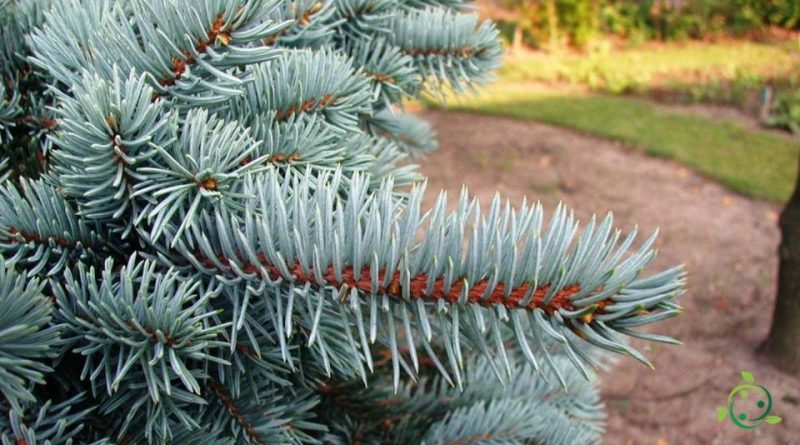How the Blue spruce is grown
How the Blue spruce is grown
The Blue spruce (Picea pungens Engelm., 1879) is a plant of the Pinaceae family, native to the Rocky Mountains, in particular to south-eastern Idaho, Wyoming, Utah and Colorado, with isolated populations in Montana, Arizona and New Mexico.
This plant was imported to Europe in the mid-nineteenth century.
The Blue spruce is a monoecious plant: the male flowers are in small reddish apical strobili, the female ones green, first erect then pendulous and yellowish-brown (8 cm long). The scales, broad at the base, narrow towards the middle to end in a narrow apex.
This plant is sometimes also used in rock gardens to expand the variety of species and to play with particular color effects thanks to its beautiful and fascinating foliage.
Cultivation –
The Blue spruce prefers sunny or partially sunny places; it does not fear the cold as it can bear very harsh temperatures without problems; the plant, on the other hand, can suffer in areas with a hot and dry summer climate.
In fact, this plant fears very prolonged drought, so it is advisable to water young specimens during the summer months, but only when the soil is dry. Adult specimens can tolerate short periods of drought, but it is good to check the soil if the summer season is not very rainy.
Although it is a conifer with an excellent ability to manage water reserves, it is also true that it is not very suitable for extremely hot and dry environments in which it can suffer a lot.
Ground –
This plant prefers soft, fresh and deep soils, where there is no water stagnation but rather humid; the soil pH must be slightly acidic.
Picea pungens plants, on the other hand, do not tolerate the presence of high limestone in the soil but apart from these indications they have no other great needs or limitations. As for the climate, in addition to the sunny and mountainous areas, it needs rather rainy summers, so if it is grown in more arid areas it is good to irrigate it regularly during the summer period, especially when the plants are young.
It is a plant not very tolerant of too cold and freezing temperatures. It can in fact resist up to a minimum temperature of -10 degrees.
Multiplication –
The propagation of Picea pungens occurs by seed in spring, placing the seeds in a mixture of peat and sand in equal parts, to be kept moist enough until germination; during the summer months it is also possible to practice semi-woody cuttings even if more difficult than the broad-leaved cuttings.
Pests and diseases –
The Blue spruce is a plant more sensitive than other conifers to attacks by aphids and mites, especially when they are found in areas outside their natural habitat. They can be subject, especially in the areas of origin, to strong attacks by xylophagous insects.
For this reason, fertilization based on mineral nitrogen (especially nitric) must never be carried out and the soils must be on average organic.
Use of the plant –
The Blue spruce is a plant used as an ornamental plant, for which many park and even dwarf cultivars have been selected.
It is of great economic importance as an ornamental tree; on the market there is a great variety of both tree and shrub cultivars, with the most disparate shapes and colors. The natural shape has a very symmetrical foliage with green foliage with bluish reflections, which makes it particularly attractive, even as a Christmas tree in the United States. Its wood, on the other hand, is of poor quality, being very knotty and not very workable.

